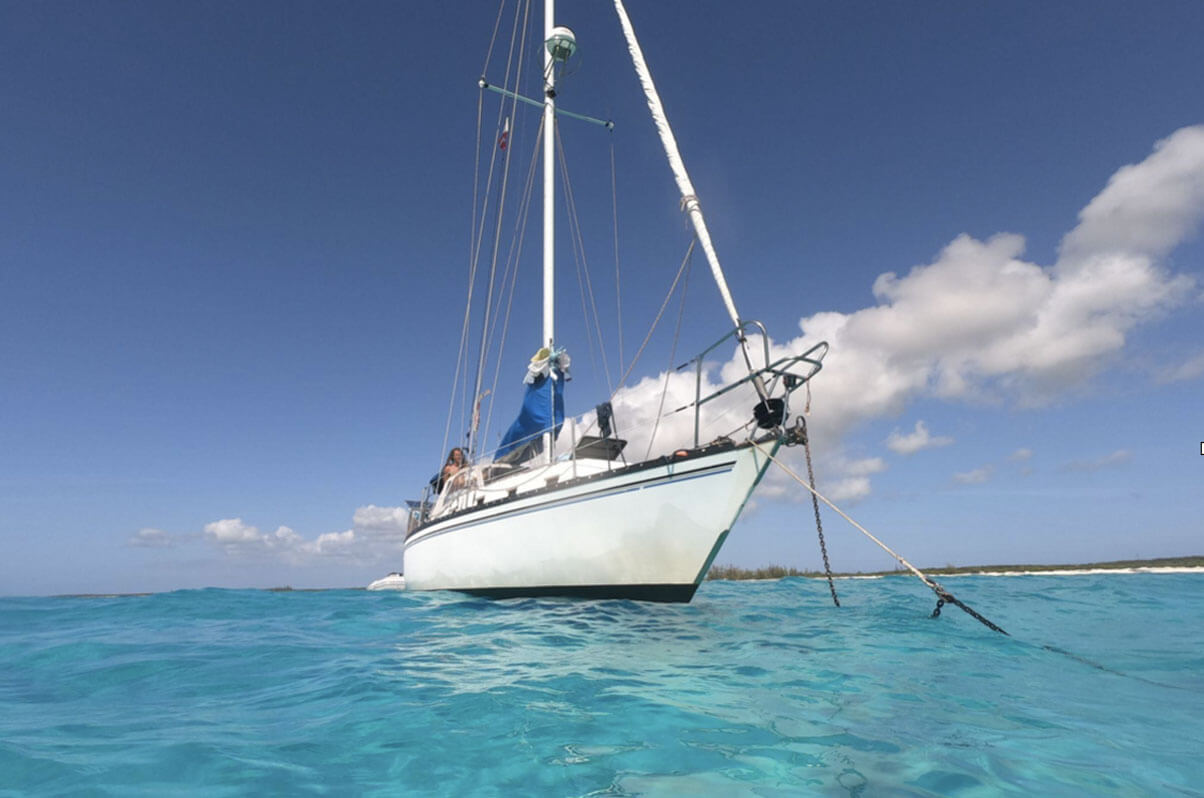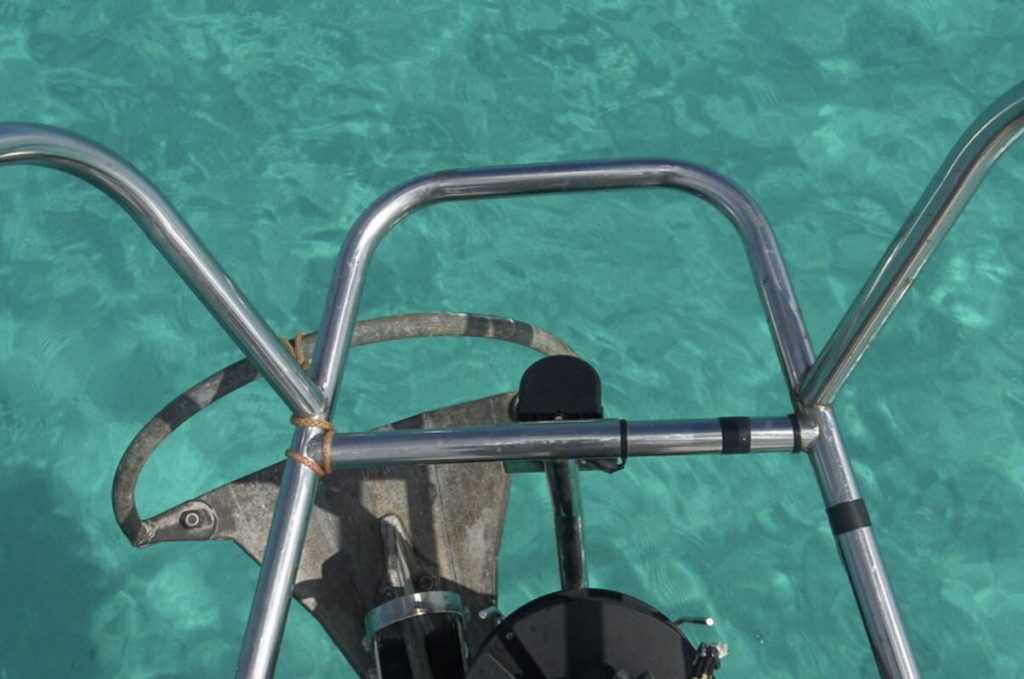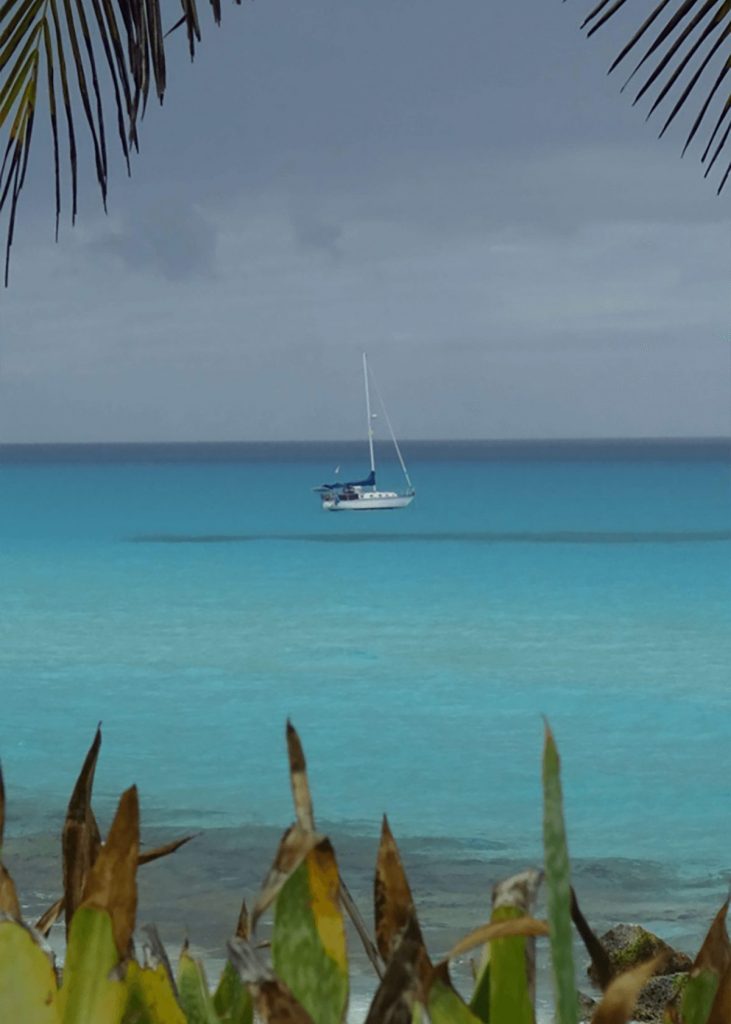
Engine trouble is bound to happen at some point if you cruise for long enough. Some bad fuel, air in the fuel lines, a dead starter battery, or even lack of compression due to a cracked piston or seized rings are all things that can really throw a wrench into getting around. Of course you never have trouble when you’re conveniently at a dock with all the help and parts you need right at your fingertips. Instead you find yourself wondering how to get yourself off a lee shore, or navigating a narrow cut on your way to drop anchor or in our case in the middle of the Bahama bank with no land in sight. These situations can really be stressful and you might find yourself asking “Now What?”. Luckily for anyone on a sailing vessel we have options.
This article will hopefully give you some tips and confidence to get yourself out of a sticky situation both on and off anchor with only your sails. These are skills we are grateful to now have and even with our rebuilt engine we often still use them to pick up and drop anchor without our engine or windlass. Here is our step by step process for picking up anchor.
Step 1
Most importantly you need to choose an anchorage that is easy to sail into. You will likely have to tack a few times to get your vessel into protection and it is tricky to tack in a tight channel where if you do not carry enough speed and your tack fails you may end up aground. So instead choose an anchorage with some room as well as somewhere that is protected while you plan to be there so you don’t get caught in an uncomfortable place until the wind or swell changes. We learned this the hard way getting beat up on a lee shore with little protection and the swell hitting us on the beam for a week.
Step 2
After your last tack as you get close to the spot you wish to drop anchor, reduce sail to bring your speed down to half hull speed or so. Enough to have good steerage but not so much that you might hit bottom at high speed or overshoot your spot. In lighter winds our boat needs the headsail for control so we reduce it and leave the main sheeted in (if we are using it). In stronger winds we come in with just our main. Every vessel is different so you may need to do some trials to figure out what works best for you. Just make sure you have enough speed to tack if you need to,
Step 3
Scout out for a sandy patch from the bow while prepping the anchor. The helmsman watches depth and prepares to furl in the headsail. Remember the tide and give yourself some room for depth changes.
Step 4
Reduce hull speed by furling your headsail and pointing into the wind or release the mainsheet. Wait for speed less than 1 knot or so.
Step 5
Hopefully you will be right over a nice sandy spot and you can now drop anchor and let the boat drift back while the helmsman sets the anchor alarm. If you happen to overshot your spot you can let the wind push you back a little or loop around and pull out some sail again to reposition.
Step 6
Backfill your main sail to help set your anchor by pushing the boom out to either side with the mainsheet loose. Dive your anchor if you are unsure if it is set well and push it in better or reposition it as needed.
Now that you are safely anchored in protection hopefully you can fix any issues with your engine and be on your way again. If not here are a few steps to help you pickup anchor under sail. We found that we cannot pull up anchor in anything much above 20kts. So we just wait for light (0-10kts) to medium (10-20kts) wind to pull up anchor. Every anchorage has its own share of variables to factor in. Are there other boats? How close to the shallows are you, etc. So we will break this part down into Light wind/ no obstacles and Medium wind with obstacles.

Light Wind (No obstacle)
Step 1
Hoist main if needed and start pulling up anchor until the last 10-20ft. Pull in as much scope as you can.
Step 2
Use your boat to help unset the anchor by cleating off the rode with minimum scope.
Step 3
Pull up anchor and secure it while allowing the boat to drift side onto the wind and unfurl headsail and sail away.

Medium Wind (With Obstacles)
Step 1
Hoist main with reef if needed. Sometimes with the main sheeted in tight your vessel will sail up on your anchor on an angle and by sheeting and unsheeting you can make picking up much easier.
Step 2
Using some line as a chain brake against the cleat you can pull in rode until you need a break and hold it with a line wrapped around your rode and through the cleat. This takes strain off your roller when the chain pulls tight in swell. Pull up as much anchor as possible.
Step 3
Unfurl a little headsail for more control around obstacles. Cleat off the rode and be ready to pull up the last of your rode quickly or release the sheets if the anchor is fouled. The reefed headsail should give you control to avoid anything on your way out as the anchor comes aboard.
After a full season in the Bahamas without our engine we look back at our experiences with gratitude and pride as it made us more comfortable and confident in an emergency as well as growing as sailors. Hopefully these tips will help give you some piece of mind when things go wrong. Stay calm and enjoy this beautiful lifestyle with less stress and more confidence. Fair winds and Following seas.
Cory Bertrand
Cory and Alex share their adventure with weekly videos on their YouTube channel “Wildly Intrepid Sailing” and share stories on their website www.wildlyintrepid.com . Their dream is to travel the world and to live without any regrets.
